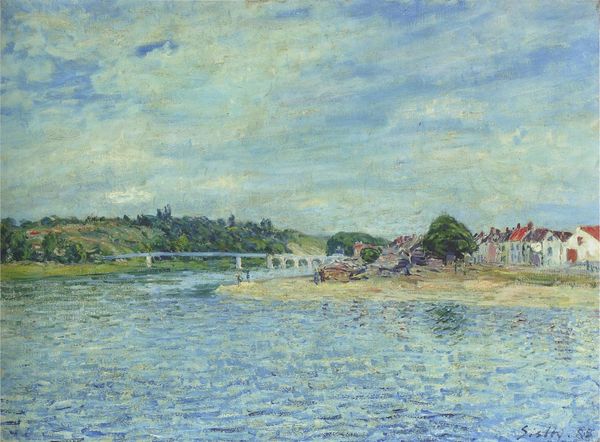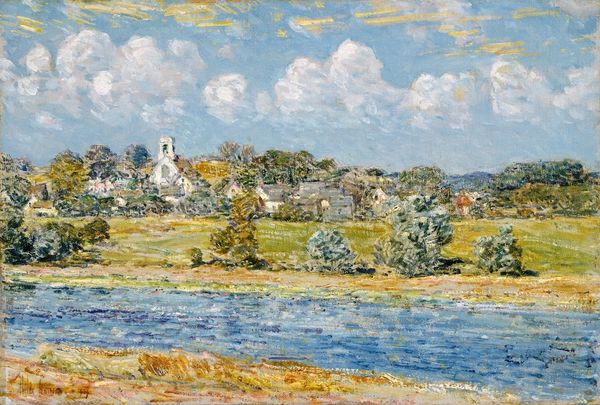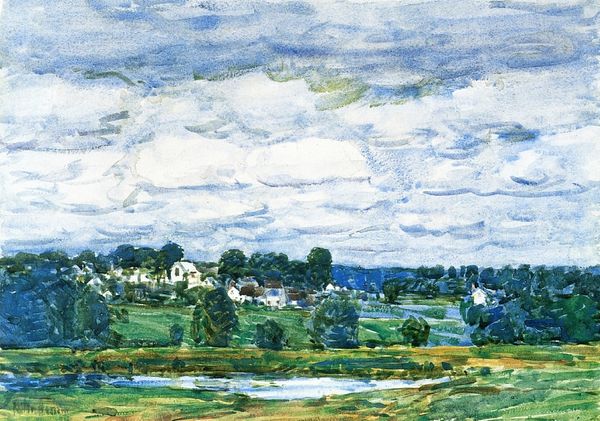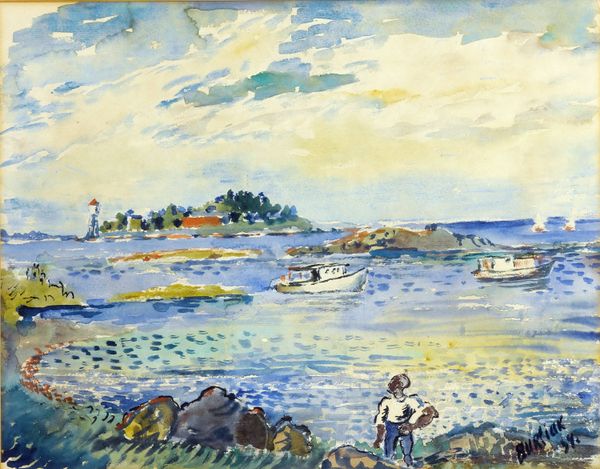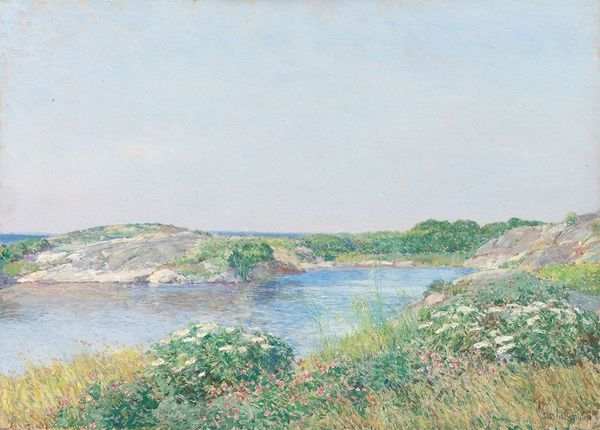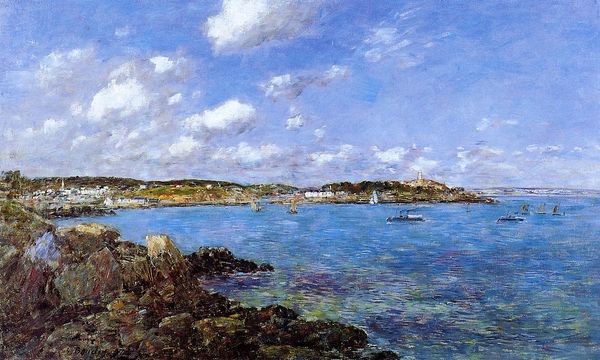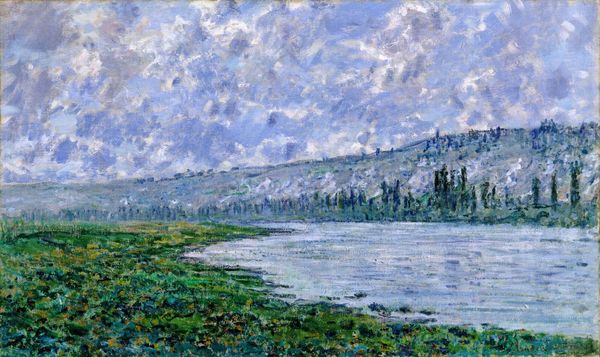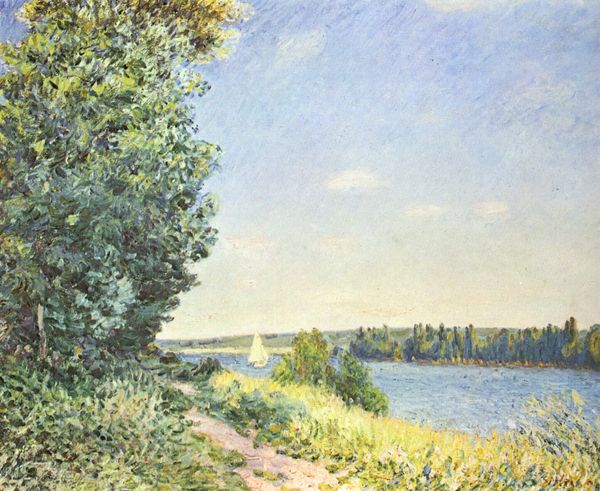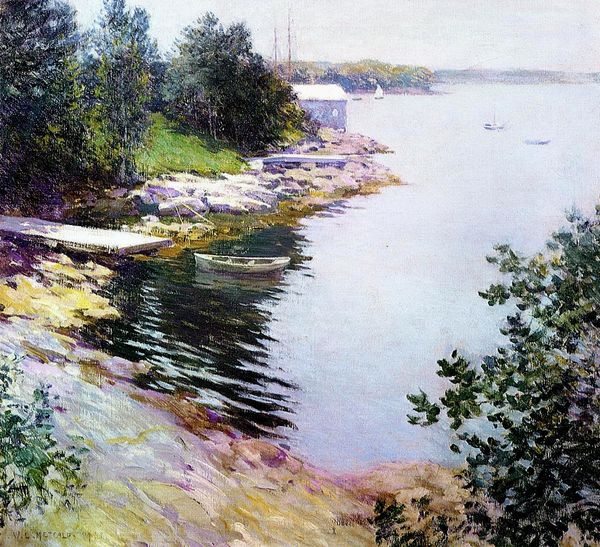
Copyright: Public domain
Editor: Here we have Childe Hassam's "Mill Site and Old Todal Dam, Cos Cob," painted in 1902, rendered in oil. There's something about the broken dam in the foreground that really grabs my attention. How do you interpret this work? Curator: The remnants of the old dam do command our attention, don’t they? Think about what a dam represents – control, containment, power. And here it is, fragmented, yielding to the natural flow. Perhaps Hassam is hinting at the inevitable – nature's triumph over human artifice, a return to a primordial state, do you agree? Editor: That's fascinating! It almost feels like a commentary on progress and decay, then, beyond just a pretty landscape. Curator: Exactly. The broken dam acts as a symbol of what was and what will inevitably become – ruins that return to the earth. Look closely, the verdant overgrowth already embraces the structure. Can you see how nature reclaims its space, blurring the lines between the built and the natural world? The colours are also interesting here: how does it strike you? Editor: I see that. The greens and blues are so dominant, almost overwhelming the greys and browns of the dam structure itself. The sky is incredibly hopeful and bright, almost mocking the decay. The painting feels balanced, even with the ruins in the front. Curator: That’s it exactly! A balancing act. It represents the dance of human endeavors against the immutable force of nature. Thanks to Impressionism’s dissolving form, we understand what endures when our ambitions wash away. Editor: I’m starting to see Hassam’s message. It’s not just a scene; it’s a reflection on time, memory, and the enduring power of the natural world. Curator: Precisely! And the universality of these themes are what make his painting a worthwhile meditation for viewers even today.
Comments
No comments
Be the first to comment and join the conversation on the ultimate creative platform.

